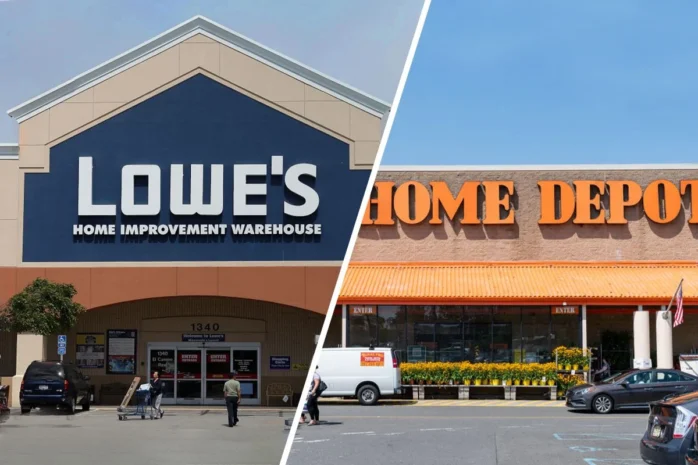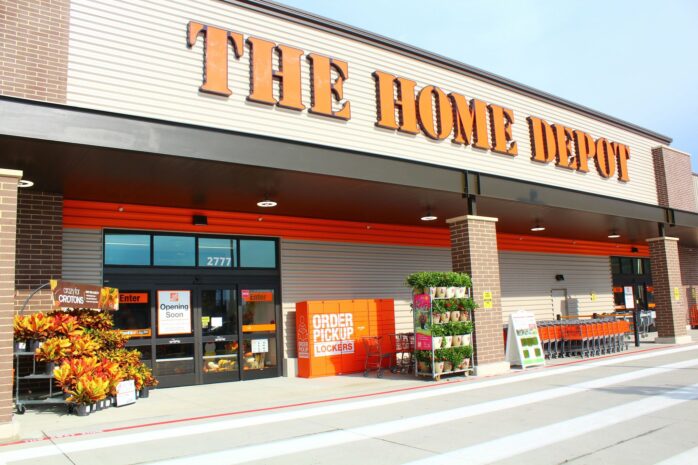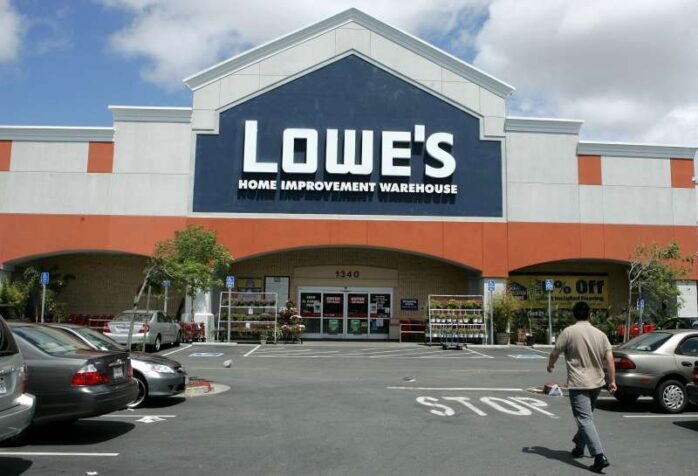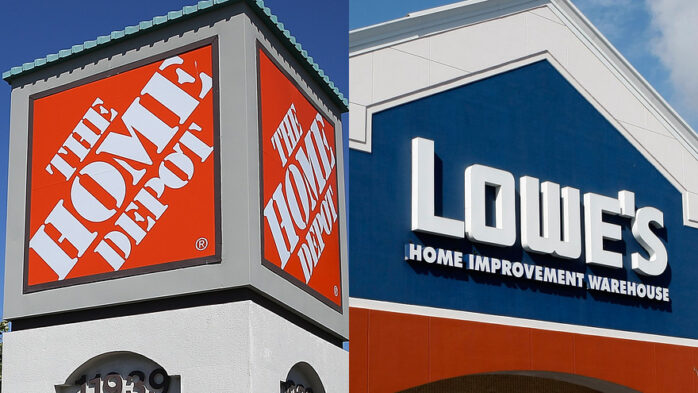Home and garden retailers cater to the needs of homeowners, gardeners, and DIY enthusiasts, providing a wide range of products and services to enhance living spaces and outdoor areas. These retailers offer a diverse selection of home improvement tools, building materials, plants, furniture, and decor items to inspire creativity and transform houses into personalized sanctuaries. Whether it’s finding the perfect paint color, selecting high-quality gardening equipment, or seeking expert advice on home renovations, home and garden retailers are invaluable resources.
Lowe’s and Home Depot are two of the largest home and garden retailers in the United States, with a combined market capitalization of over $400 billion. These companies have experienced significant growth over the past 3 years, and both stocks have been popular among investors seeking exposure to the retail sector. In this article, we will look closer at Lowe’s and Home Depot stocks, their financial performance, and the future of these companies.
Overview of Lowe’s and Home Depot
Lowe’s and Home Depot are retail chains specializing in home improvement products and services. Lowe’s was founded in 1946 and operates over 2,200 stores across the United States, Canada, and Mexico. Home Depot was founded in 1978 and operates over 2,200 stores in the United States, Canada, and Mexico. Both companies offer various products and services, including home appliances, building materials, tools, and home decor.
Lowe’s and Home Depot Financial Performance
Lowe’s and Home Depot have experienced significant growth over the years, with their stocks performing well in the stock market. Both companies have reported strong financial results in recent years, with revenue and net income increasing steadily.
As of April 15, 2023, Lowe’s stock price was $284.60, with a market capitalization of $192.03 billion. The company’s revenue for the fiscal year 2022 was $96.44 billion, up from $89.60 billion in the fiscal year 2021. Lowe’s net income for the fiscal year 2022 was $9.36 billion, up from $8.39 billion in the fiscal year 2021.
As of April 15, 2023, Home Depot’s stock price was $420.98, with a market capitalization of $448.50 billion. The company’s revenue for the fiscal year 2022 was $138.08 billion, up from $132.11 billion in the fiscal year 2021. Home Depot’s net income for the fiscal year 2022 was $14.08 billion, up from $12.86 billion in the fiscal year 2021.
Comparing Lowe’s and Home Depot
Although Lowe’s and Home Depot operate in the same industry, the two companies have some notable differences. For example, Home Depot has a larger market capitalization and generates more revenue than Lowe’s. Additionally, Home Depot has a higher gross profit margin and operating margin than Lowe’s.
One factor contributing to Home Depot’s success is its focus on e-commerce. The company has invested heavily in its online platform, and as a result, its e-commerce sales have been growing faster than its in-store sales. In contrast, Lowe’s has been slower to adopt e-commerce, although the company has made strides in this area in recent years.
Another factor that sets the two companies apart is their approach to store expansion. While both companies have been opening new stores, Home Depot has been more aggressive, with plans to open over 150 new stores in the next few years. On the other hand, Lowe’s has been focusing more on improving its existing stores, with plans to invest over $10 billion in its stores and supply chain by 2024.
Future Outlook for Lowe’s and Home Depot

The future looks bright for Lowe’s and Home Depot, as the home improvement industry is expected to grow in the coming years. According to a report by IBISWorld, the home improvement industry is projected to grow at an annualized rate of 3.6% over the next five years, reaching $343.2 billion by 2026.
Lowes History
Lowe’s Companies, Inc. is a home retailer founded in 1921 by Lucius Smith Lowe in North Wilkesboro, North Carolina. Originally a tiny hardware store, Lowe’s has grown into a major home improvement chain with over 2,000 locations in the United States, Canada, and Mexico.
In the early years, Lowe’s primarily served North Carolina and Virginia rural areas. The company grew slowly but steadily, adding more products that meet the needs of its customers. In the 1940s, Lowe’s began selling more significant items like appliances and expanded its selection of lumber and building materials.
By the 1960s, Lowe’s had become a regional powerhouse, with stores in several southern states.
In 1961, the company went public and began trading on the New York Stock Exchange. Throughout the 1970s and 1980s, Lowe’s continued to enlarge, opening stores in new markets and introducing new product lines.
In the 1990s, Lowe’s underwent a period of rapid growth and transformation. The company opened its first stores in California and other western states and introduced new concepts like the “big box” store format. Lowe’s also began investing heavily in technology, launching its first website in 1996 and implementing advanced supply chain systems to streamline operations.
Today, Lowe’s is one of the largest home improvement retailers in the world, with annual revenues of over $80 billion. The company continues expanding its product offerings and investing in technology, focusing on delivering customers a seamless omnichannel shopping experience. Lowe’s is also committed to sustainability and social responsibility, implementing initiatives like energy-efficient stores and community-giving programs.
Home Depot’s History

The Home Depot is a home retailer founded in 1978 by Bernie Marcus and Arthur Blank. The company started with two stores in Atlanta, Georgia, and quickly expanded to other states. Today, Home Depot has over 2,000 stores in the United States, Canada, and Mexico, and it is the largest home improvement retailer in the world.
The founders of Home Depot, Bernie Marcus and Arthur Blank, had both previously worked at the Handy Dan Home Improvement Centers, a California-based retailer. When they were fired from Handy Dan in 1978, they started their own company. They raised $2.3 million in venture capital and opened their first two stores in Atlanta that same year.
From the beginning, Home Depot aimed to differentiate itself from its competitors by offering low prices, a wide selection, and exceptional customer service. The stores were designed to appeal to professional contractors and do-it-yourselfers, focusing on the needs of the professional market.
The company’s growth was rapid and relentless. By 1981, Home Depot had expanded to Florida and had gone public, raising $4.1 million in its initial public offering. Over the next decade, the company continued to expand across the United States and into Canada, with its first international store opening in Ontario in 1994.
Throughout its history, Home Depot has introduced several innovations to the home improvement retail market. In 1986, the company launched the Home Depot Foundation, which focuses on improving the homes and lives of U.S. military veterans and their families. In 1991, Home Depot began offering customers free “how-to” clinics, which have since become a popular feature of the company’s stores. And in 2001, the company launched its online store, which has grown to become one of the largest e-commerce sites in the world.
Home Depot is a Fortune 50 company with over 400,000 employees and over $132 billion in annual revenues. The company continues to focus on its core values of customer service, product selection, and low prices while also exploring innovations to meet the needs of today’s home improvement customers.





















